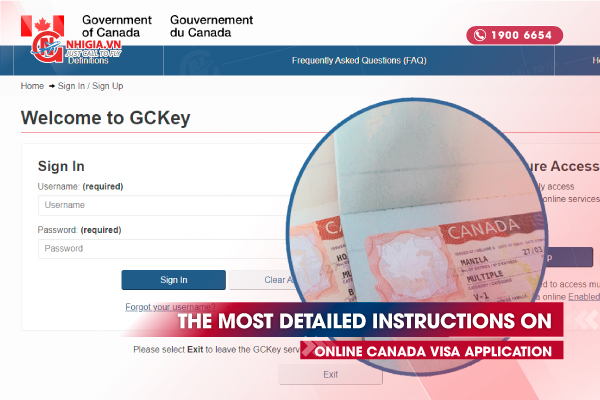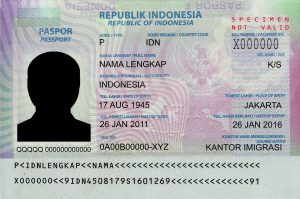
To apply for a visa in Canada, you can start with the Canadian government’s Immigration and citizenship . You need to visit the nearest country’s consulate. This is a list of country embassies in the world.
Planning and ensuring you have all the necessary documentation is essential when applying for a visa in Canada and getting approval. This article will provide an overview of the different types of visas available to international travelers to the country and offer suggestions for submitting an application that will be approved quickly by immigration officials.
How to apply for a visa to Canada
You can apply for a visa at the Government of Canada Immigration and Citizenship , which is responsible for processing visa applications in Canada. You can find the type of visa you need on that page.
For citizens of countries that do not have a visa waiver or Electronic Travel Authorization (eTA) agreement with Canada, obtaining a visa is mandatory to enter the country. People from approximately 148 countries must obtain a visa to visit, work, or move to Canada.
However, citizens of other countries may need to obtain a visa before traveling to Canada. The type of visa required will depend on the purpose of the visit, such as for work, study, or family reasons.
Also read Highest Paying Jobs in Canada
To apply for a visa to Canada, you need to follow these steps
Check your eligibility on the IRCC Website .
Create an account and fill in the application form.
Pay the registration fee.
Submit your application online or in person.
Wait for processing (processing times vary).
Attend interviews (if required).
Receive your visa if approved.
Types of Visas You Can Apply for
Most foreigners who want to work, travel, or study in the country must apply for a visa. Canada offers different types of visas depending on the purpose of your visit. The types of visas are:
Study Permit – to study in Canada , short term or undergraduate program.
Work Permit – for temporary work in Canada , with a job offer from a Canadian employer.
Working Holiday Visa – for young people from certain countries to travel and work in Canada.
Express Entry – for skilled workers to immigrate to Canada permanently various programs.
Super Visa – for parents or grandparents of Canadian citizens or permanent residents to visit Canada for an extended period.
Business Visit Visa – for business-related visits to Canada , such as attending meetings or negotiating contracts.
Provincial Nominee Program – for Immigration through provincial or territorial candidacy .
Family Sponsorship – sponsors an eligible family member to come and live in Canada.
Do I need a visa to Canada
To find out whether you need a visa to visit Canada and what type of visa you need, you can check with the Canadian Government or consult the Canadian embassy or consulate in your country.
Travelers visiting Canada often require an Electronic Travel Authority (ETA) , depending on the destination and duration of their trip. Americans, Mexicans and people from most high-income countries do not need a visa to visit Canada. Everyone will need a tourist visa to enter Canada.
How to get a tourist visa in Canada
Before applying for a visitor visa to Canada, you must gather all the necessary documents and information, which may vary based on your country of citizenship and the purpose of your visit.
Additionally, most applicants must provide biometrics (fingerprints and photo) as part of the application process. Follow the instructions provided by the Government of Canada to provide your biometrics, which may involve a visit to a Visa Application Center or other designated location.
The standard procedure for applying for a visitor visa to Canada usually includes the following:
Obtain the necessary documentation to prove that you meet the visa requirements.
To apply for a visitor visa can be done completely online by creating an account, uploading your documents, and paying your fees online.
Include fingerprints and photos (biometrics).
After submitting your online tourist visa application, the Canadian government will review your documents and may request additional information or documents. This may include attending an interview with officials in your country, undergoing a medical examination , or obtaining a police certificate .
How to get a work visa in Canada
To get a work visa in Canada, you usually have to follow these steps:
Find job offers from Canadian employers authorized to hire foreign workers.
Determine the type of work permit you need, such as an employer-specific work permit or an open work permit.
If you do not meet the LMIA exemption criteria, your employer must obtain a Labor Market Impact Assessment (LMIA) from the Canadian government.
Complete the online work permit application form and pay the required fees.
Submit your application and supporting documents, including job offer, LMIA, and biometrics.
Wait for your application to be processed by the Canadian government, which may take several weeks or months.
If approved, receive your work permit and travel to Canada to start working.
How to get a student visa for Canada
To obtain a Canadian student visa, you must actively apply and gain acceptance from a Designated Learning Institution (DLI) in Canada. First, you need to find a university or learning institution that will enroll you. After that, you must receive a Canadian study permit and a Canadian student visa for the duration of your stay.
How to get a family visa in Canada
If you wish to bring a family member to live with you in Canada, you can sponsor them for permanent residence through the Family Class sponsorship program. Here are the general steps to follow:
Determine your eligibility as a sponsor: You must be a Canadian citizen or permanent resident and meet other specific requirements.
Determine your family member’s eligibility: They must qualify as a spouse/common-law partner, dependent child, or qualifying parent/grandparent.
Apply to sponsor your family member: You must apply to Immigration, Refugees and Citizenship Canada (IRCC) to sponsor your family member.
Submit their application for permanent residence: Once approved as a sponsor, your family member must apply.
Wait for processing: Processing time may vary depending on factors such as country of origin and whether additional documentation is required.







